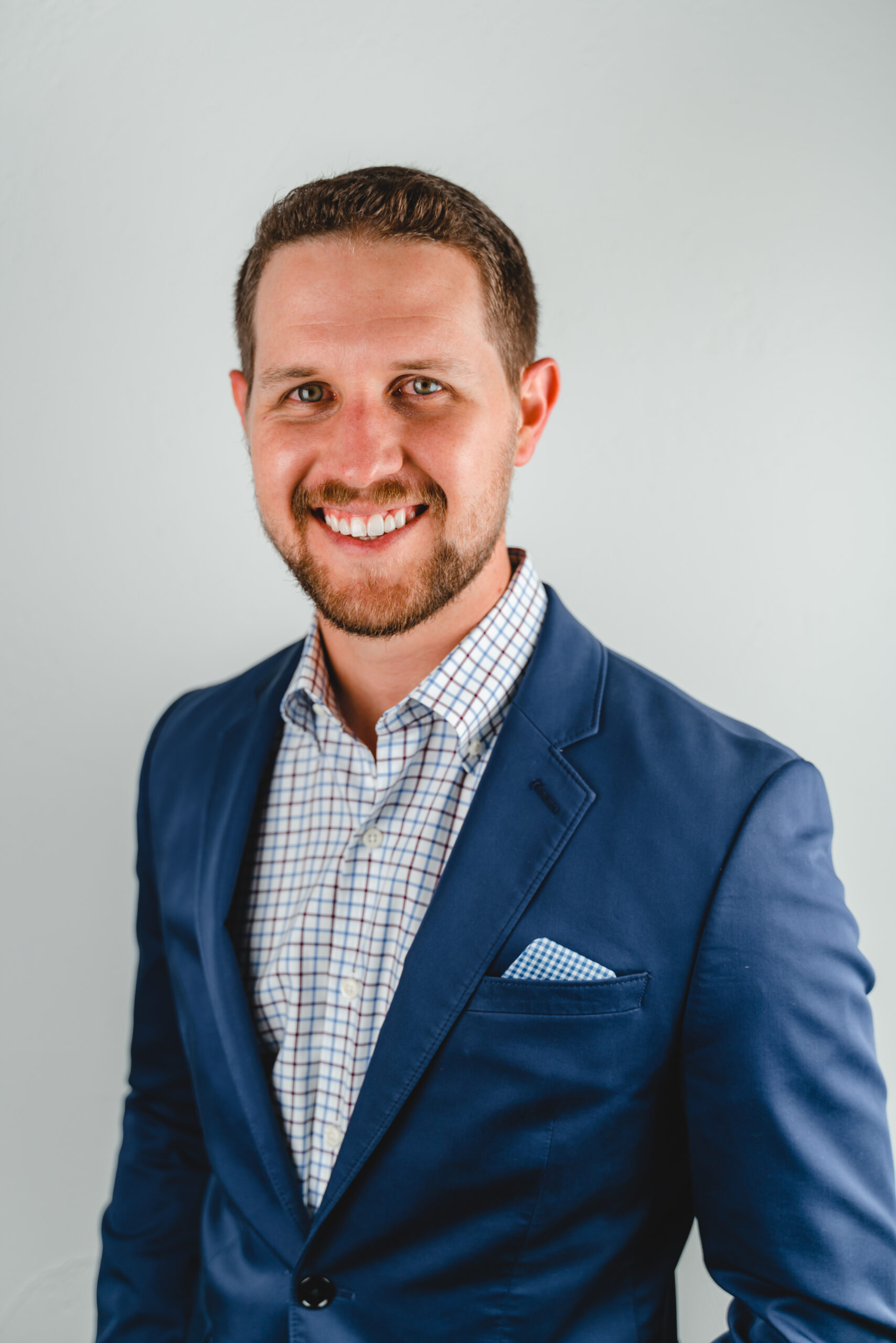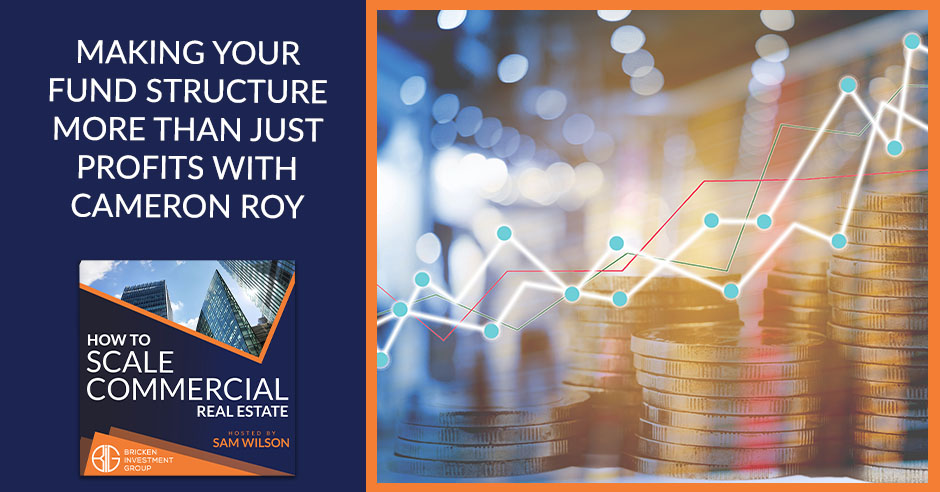Real estate is not only about transacting properties between buyers and sellers, but also an inspiring way to build sustainable communities. Cameron Roy saw the advantage of making fund structure more than just preserving capital and growing wealth. He joins Sam Wilson to share how their services at The Common Good Fund focus on enjoying numerous real estate benefits while impacting the communities they belong. Cameron shares how he connects with investors, what it costs to create such a fund structure, and how he was able to raise more than $3 million right out of the gate.
—
Watch the episode here:
Listen to the podcast here:
Making Your Fund Structure More Than Just Profits With Cameron Roy
Cameron Roy is a real estate investor in multifamily and single-family homes. He’s the Cofounder and Managing Partner of The Common Good Fund. He has over 500 units under management. Cameron, welcome to the show.
Thanks for having me. I appreciate the invite. I’m looking forward to the conversation.
The same three questions I ask every guest who comes to the show are: Can you very quickly tell us where you started, where you are now, and how you got there?
I started in a small West Texas town, blue-collar work, a middle-class family my whole life. I went to college and paid for a degree that I shouldn’t have. I had some fun in college, but I’ve got a Business Management Degree. I stumbled upon early in my career with the book Cashflow Quadrant. Looking back, I would have paid just as much for that book as my college degree if that’s what that book costs. Years later, I studied, got a mentor, took leaps and bounds and got to where I am. I am Managing Partner of The Common Good Fund. We raise money and deploy it to people we know, like, and trust doing great deals across the country. That’s where I came from and how I got to where I am.
Did you go directly into real estate or did you go out and work in the corporate world before you got into real estate?
I graduated from Texas Tech in Lubbock. In 2015, I went to grad school in Denver for a year. I moved back to Lubbock to be with my wife. We were dating distance and that wasn’t working. I was like, “I got to be next to my honey.” I got married and moved to Dallas when I was 24. We were newly married, broke as a joke, and needed a job.
I didn’t know anything about real estate, but I was pretty good at talking to people, so I naturally took a job in sales. I did that for three years, sold high-end corporate office furniture and then my grandfather died in 2018. He was my hero and he had some real estate. That’s where I got curious about cashflow and how that’s taken care of my grandmother. Through an exploratory journey of that world, I kept digging and found myself in it.
How was your grandmother living on cashflow in real estate? What a great legacy to leave, maybe not necessarily the assets themselves but the knowledge to say, “This is something I can repeat.” What was that process like?
Ignorance is the main reason why a lot of people don’t accomplish much in life.
It is all single-family homes. My first exposure to it was I got into the bird strategy. I didn’t do the bird strategy and house hacking. I was listening to a lot of BiggerPockets. I thought, “I want a giant real estate portfolio of single-family homes I’m renting out because that’s the cap. I thought that’s what you could do.” Through reading the Cashflow Quadrant, I realized you could do a lot quicker with a lot less effort. I wanted to do that and scaled straight into multifamily.
Funny enough, when I bought the Cashflow Quadrant book, I was in Barnes & Noble looking for something to help me scale up in the company. I was determined to be the CEO. I love the corporate ladder, the internal politics and that grind. I was looking for something to help me get from point A to point B, being the CEO of the company. After I’ve read the Cashflow Quadrant, a week later, I determined I would no longer be the CEO of that company. I was devising an exit plan.
What do you think is the secret to that ability to shift your mindset so fast and go, “I was looking for one thing, but I found something else instead?” What was that like?
It was education. Ignorance is the reason a lot of people don’t accomplish much in this life. They don’t know and believe they can. They don’t think where they’ve come from or the resources they have could get them to where they would hope or aspire to be. In most cases, that’s not true. I learned. I read the Multi-Family Millions by David Lindahl and I was like, “I come from a blue-collar background and a working-class family. I don’t have rich uncles. I can do this. Let’s figure out how. I know I can. The excuse isn’t relevant anymore that I don’t know anybody doesn’t have a background in it.” Continuing to educate myself helped me overcome that limiting belief.
At what point in time did you exit the corporate world and say, “I’m going into this full-time?”
Two weeks before COVID-19 hit and before President Trump at the time said we have a national emergency, it was pretty bananas. I picked up the Cashflow Quadrant in December of 2018. I determined in 2019 early that I was going to do multifamily real estate. I spent that entire year, hired a coach, read every book, showed up to every event and immersed myself as much as I could in this world.
For seven months, I drove to the back of my office twice a week, put my coach on speakerphone, and listened. I had homework for the week and was due the weekend. I did that for seven months, learning how to underwrite, look at markets, run a property, hire property management, do all the things necessary to be successful. It wasn’t a very flippant decision to leave. It was a plan and it took a while, but I was confident that I could make something work when I quit. I quit and had no deal lined up but I knew I wanted to spend all my time chasing this versus building someone else’s dream.
You have 500 plus units under management.

I got my first deal in July of 2020. I learn about leverage and partnerships. I found a great deal here in Dallas, which was the best in my backyard, 120 units. We raised $3.4 million. It was awesome. I learned the process. When I started learning was when I started on that deal. All the head knowledge and confidence I had was great. I walk in the property doing due diligence, lease auditing, building a plan and understanding the CapEx budget we needed. How are we going to justify increasing rents? What expenses can we decrease? The learning began by doing that and figuring it out on an actual property versus books.
How did you convince the seller that you are a worthy buyer? Dallas is not a market for newbies, typically. A lot of times, buyers aren’t going to give you the time of day like, “Congrats, Cameron. You’ve done zero deals. Have a good life.”
I would encourage you to let me know when you find that person who accomplished that. It’s not me. When I first quit my day job, I thought that could be me. I was buying brokers lunch, walking properties with them and getting the 5th to 10th look. Nobody was taking me seriously. I learned about the power of leverage, not just leveraging other people’s money but experiencing time.
I immersed myself in a mastermind, networked some people there and partnered with guys who lived in New Jersey. We got along and trusted each other. They liked me and said, “We had somebody take us under their wing to get their foot in the door. I see your value and hustle. We want to do that for you. Let’s do a deal.” We found it in Dallas. It’s like, “You’re a perfect fit because you’re the only person on the team who lives near the property.”
I was driving out there taking pictures and I’m the boots on the ground guy of the team. I don’t know if it would have happened if the deal wasn’t necessarily in my backyard, but I took it. I took the break I had and that’s how. I’m not the guy that convinced the broker to give some newbie the deal. I immersed myself in a well-experienced team.
Tell me about the capital raise. $3.4 million is a lot of money to raise your first time out of the gate. Was that also in collaboration with your partners?
It was. Part of the deal with me was like, “You unquestionably can be the guy who’s part of the GP that is around, managing, taking care and operating the deal when needed.” I didn’t know if I could raise $5 or $3.4 million. I did help with the capital raise. I figured out I could raise some money. Surprisingly to me, none of my investors came from any of my family. I thought that’s where it came from.
I have a middle-class family, but it was a 506(b) deal like, “We can take non-accredited folks.” My finance 506(c) is exclusively, but I was like, “I don’t know what I raised.” I raised some there, but the majority of the success with me was being able to be the guy near the deal. That’s been a fun process to be close to it and take care of it when need be.
Don’t say yes to everything. Get very strategic and specific on what you say yes to.
You got that deal done. Did you do any other deals before you elected to start a fund?
No. What I learned throughout that entire process was I know how to find and manage a deal, make an offer, put a plan in place to increase the value and that was all good, fun and dandy, but my favorite part about that first deal was meeting with investors, telling them the story of a new investment vehicle, a strategy for them to build real wealth, avoid taxes, be passive and hope that the market fluctuates in your favor but be directly tied to people you know, like and trust operating assets that your capital’s tied to. I loved that. I said, “How did I do that full-time and get paid? I want to do that. I’m not a licensed CPA. I don’t have any Reg Ds, license, Series 56 or 57.”
I met with my attorney that said, “You could do a fund structure, raise the money into a fund, partner with people, be the capital source and that’s a done deal.” I met with my new partner for my fund and he’s a guy who I would ask to mentor me in every way. He’s an older gentleman, a great man and has awesome business success. He called me one day where I blew and this was in February 2021.
He said, “Cam, you and I have been talking about doing the same thing, the fund structure. Why don’t we partner together?” It was an instantaneous yes for me. It’s like, “You’re a guy I would want to get every ounce of wisdom I could from and you want to be my business partner? Yes.” In 2021, we built The Common Good Fund. We did our first deal in July 2021. We partner with a group that did 384 units out in Florida and we’re partnering with a group doing a 98 bill to rent units in Lafayette, Louisiana, for the capital’s stock.
What has that been like when you’re talking to investors? A lot of people I’ve spoken with have said, “Don’t start a fund until you’ve got a real deep bench of investors because it’s hard to do out of the gate.” What’s that investor conversation like when you’re like, “Put money in my fund. We don’t know if we’re going to deploy it yet or what you’re going to be invested in but come on board.”
It’s very hard and tiresome a lot of times. Sometimes you can hit roadblocks that make you rethink your strategy. Chris and I, my business partner, have this philosophy of, “Let’s figure out what the next right thing to do.” It may be as simple as an email, reaching out to the operator or following up. We have found success in focusing our undivided attention on the tasks needed. We believe the results will take care of themselves and they have so far. I’m sure that we’ve left a lot of money on the table because of our inexperience, we have some deals under our belt, but some operators have a lot more deals under their belt.
Why would they trust us? It comes down. What I’ve realized is, at the end of the day, most investors ask this question, “How much money am I going to make if I put in?” You can walk into the pro forma, OM, everything and tell them how much they’re going to get out. Most of the people who wire us checks or money are the people who we know and like. We’ve built substantial relationships.
None of our investors as of yet are somebody we’ve never met our touch base with a few times. Chris and Kim got character and integrity. Their morals and ethics lineup. I’m comfortable with them having my money. People are more comfortable with the person versus the assets. The asset could suck but it’s the person I’m confident in.

How does that work? I don’t have any direct experience with a fund. Let’s say somebody puts money in the fund, but it doesn’t get deployed for a couple of months, like 3 months or 4 months. Is it idle capital until it gets deployed like, “I can’t earn any return?” Is it a crew of prep returns? What does that look like?
It sits there and waits to be deployed. If we haven’t deployed it within 90 days, we either send it back to them unless they say, “I want to reallocate for another 90 days.” We haven’t run into a problem yet of not being able to deploy money. We have constant deal flow. That’s not a problem. We want to solve the capital problem. I’ve also learned that since our fund is 506(c), most of the investors we’re dealing with are high-net-worth individuals.
I’ve learned from them versus non-accredited investors that they don’t want to touch their money. It causes more problems for them when they have it than when they don’t. They’re like, “Keep it and let me know when there’s a deal lined up. I will send paperwork but don’t send that back to me.” It’s a different problem whenever you have different kinds of wealth.
Once it comes back, they go, “I’ve got $50,000, $100,000, $500,000 that I’ve got to go find a new place to redeploy it.” It’s something else to think about and strategize over. You’ve got to begin a whole new game plan of where they’re going to put it if they get it back.
There is no rush to take any big risks. Most of my investors are more concerned with the preservation of their capital. They don’t have a giant risk appetite because they’ve got their wealth. They’re okay leaving it parked with us like, “When you got a deal, send it to me. I’ll look at us on the paperwork but don’t send that back to me. I don’t want it.”
You said, “When you have a deal, send them paperwork.” Once they got in a fund, I thought it was up to you as the fund manager to decide when and where it would get deployed. Do you have to repaper for each transaction?
What we have with our attorney, we created something very special and it’s called a super fund. We have our general fund called The Common Good Fund and people park their money there in The Common Good Fund. Every time we do a new deal, it falls underneath The Common Good Fund as a Special Purpose Vehicle, SPV. It’s like, “Your money is here. Do you want it to be in this deal?” They would sign accordingly and we’d take it from The Common Good Fund, put it in our new SPV and deploy that SPV into that deal.
When they invest in an SPV, you’re not going through the whole 150 pages PBM and all that nonsense with them every single time. Is it like one sheet, “Put it here?” What’s that look like?
Invest in people, not just the material things. Use your business to love and serve others.
It’s not multiple PPMs. It’s one PPM, but they’re signing new paperwork for SPV into a specific deal.
Last question for you, what was the cost for you out of the gate to get your fund structure set up because that’s oftentimes a prohibitive thing for people that want to start funds early on?
You probably need to have $20,000 ready to go between legal fees and accountants because you want to set up a solid team. We realized upfront that we don’t want to pigeonhole ourselves to being the accountants, litigators, social marketing people to running the back-end systems of automation. We put good systems, people and teams in place that cost a little bit, but that’s about what I would say we’ve spent total and startup around that.
I’d like to jump into the final four questions if you don’t mind. What is one tool or resource that you find you can’t live without?
SyndicationPro is what we use to manage our investors, the flow of cash and the flow of communication. It’s a phenomenal CRM that we’ve loved and utilized. I can’t imagine trying to work without it.
If you could help our readers avoid one mistake in real estate, what would it be? How would you avoid it?
Don’t say yes to everything. When I first got started, I said yes to everything. I used to think you had to be successful, but if you say yes to everything, you’ll be in ten masterminds and paying more money than you make. Your wife will wonder where you’re at every weekend and all these business trips. Get very strategic and specific on what you say yes to it. It doesn’t need to be everything.
When it comes to investing in the world, what’s one thing you’re doing to make the world a better place?

Invest in people. At the end of the day, that’s who shows up at your funerals, not stuff. If you want to have a funeral where people have to haul in a bunch of stuff, great, but I’d rather have, love, serve people and use your business to love and serve people. You’ll truly find the greatest joy in your life could offer versus any business success that could be thrown your way.
Cameron, if the readers want to get in touch with you or learn more about you, what is the best way to do that?
The best way is to find me on LinkedIn. I’m pretty active there or you can go to TheCommonGoodFund.com and find my contact information. Feel free to email me or reach out. I’ll be happy to connect with you.
Cameron, thank you so much. I appreciate it.
Thanks, Sam.
Important Links:
- The Common Good Fund
- Cashflow Quadrant
- BiggerPockets
- Barnes & Noble
- Multi-Family Millions
- SyndicationPro
- LinkedIn – Cameron Roy
About Cameron Roy
 Cameron Roy is a real estate investor in multifamily, and single family homes. He’s the co-founder and managing partner of The Common Good Fund. He currently has over 500 units under management.
Cameron Roy is a real estate investor in multifamily, and single family homes. He’s the co-founder and managing partner of The Common Good Fund. He currently has over 500 units under management.

